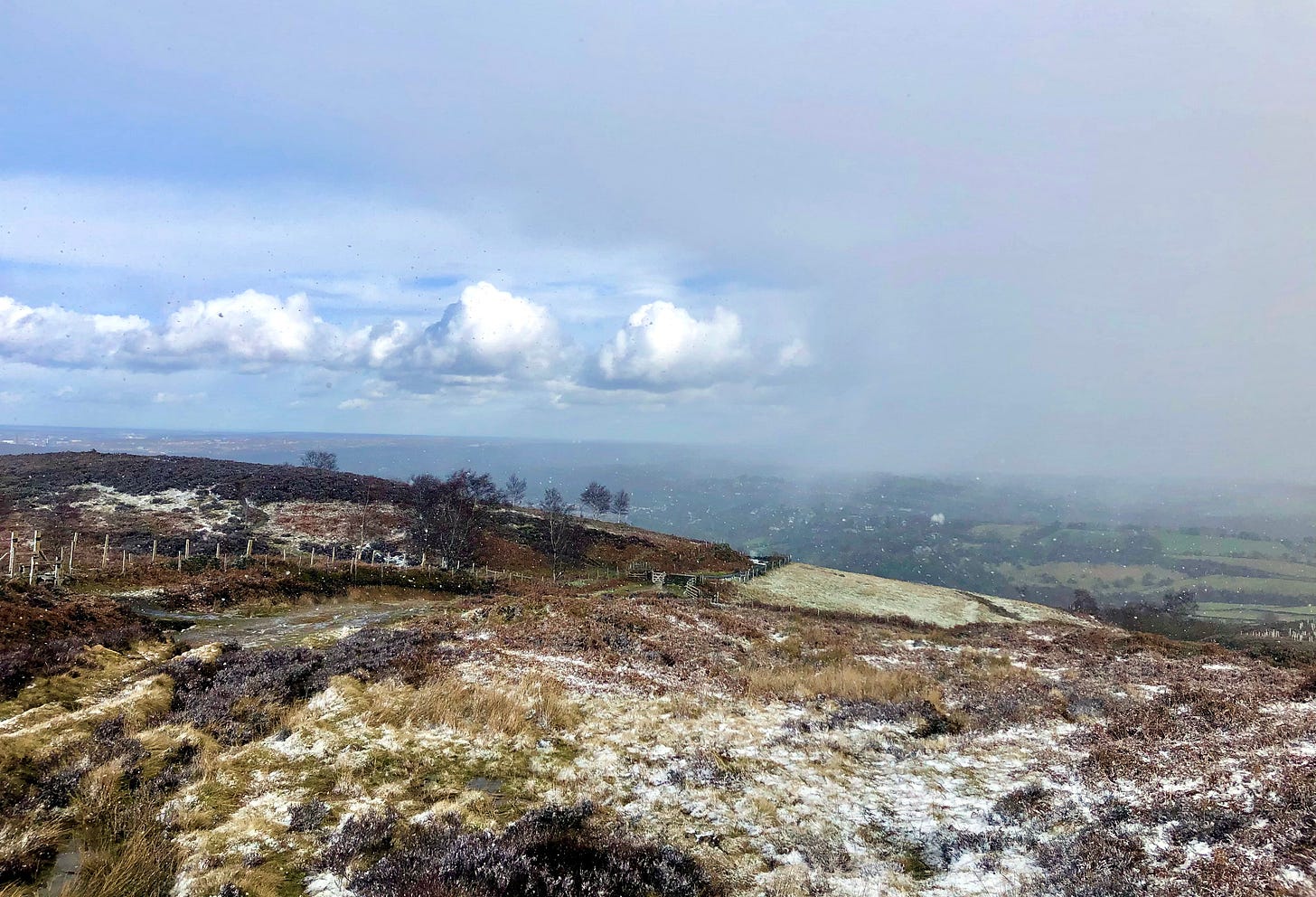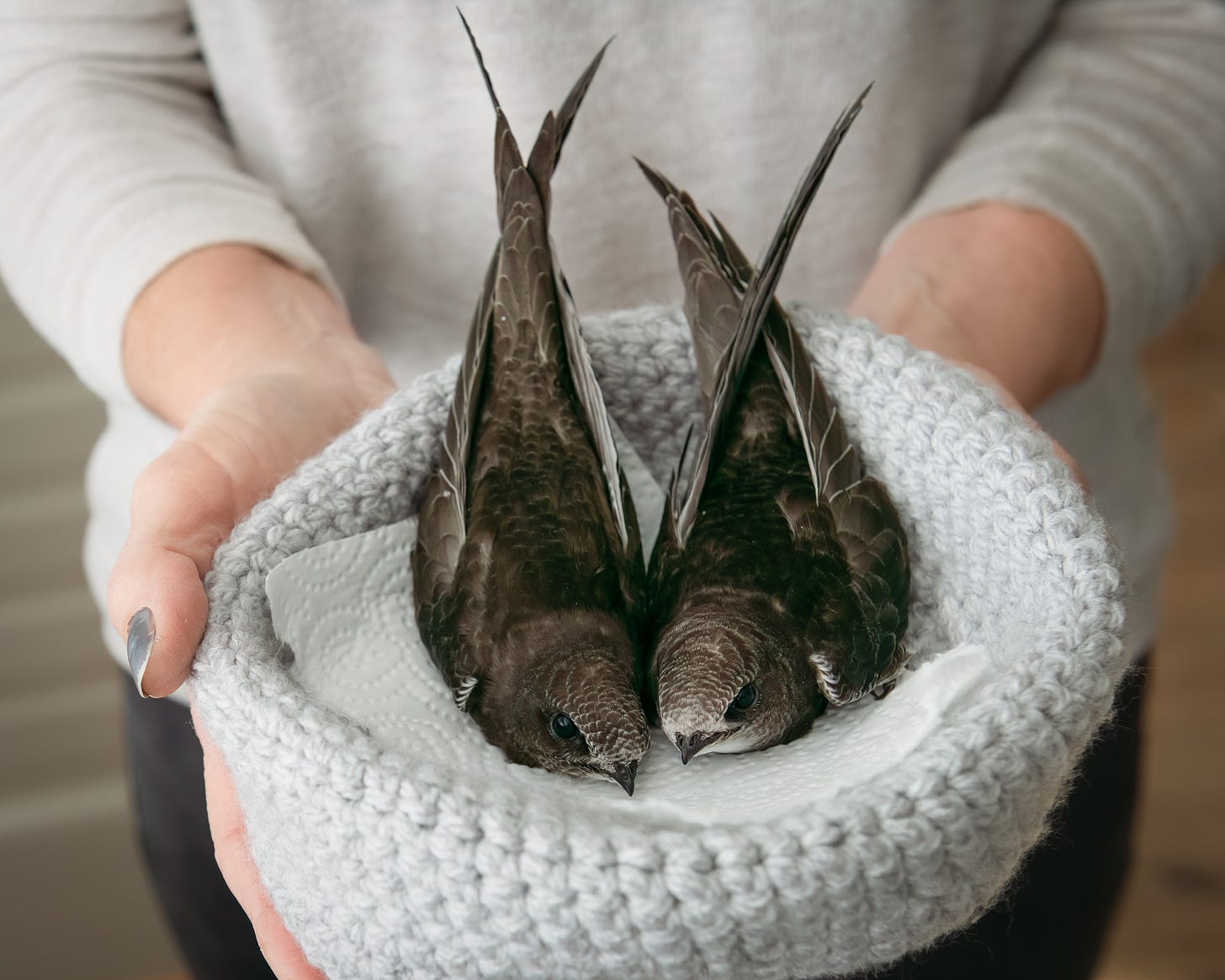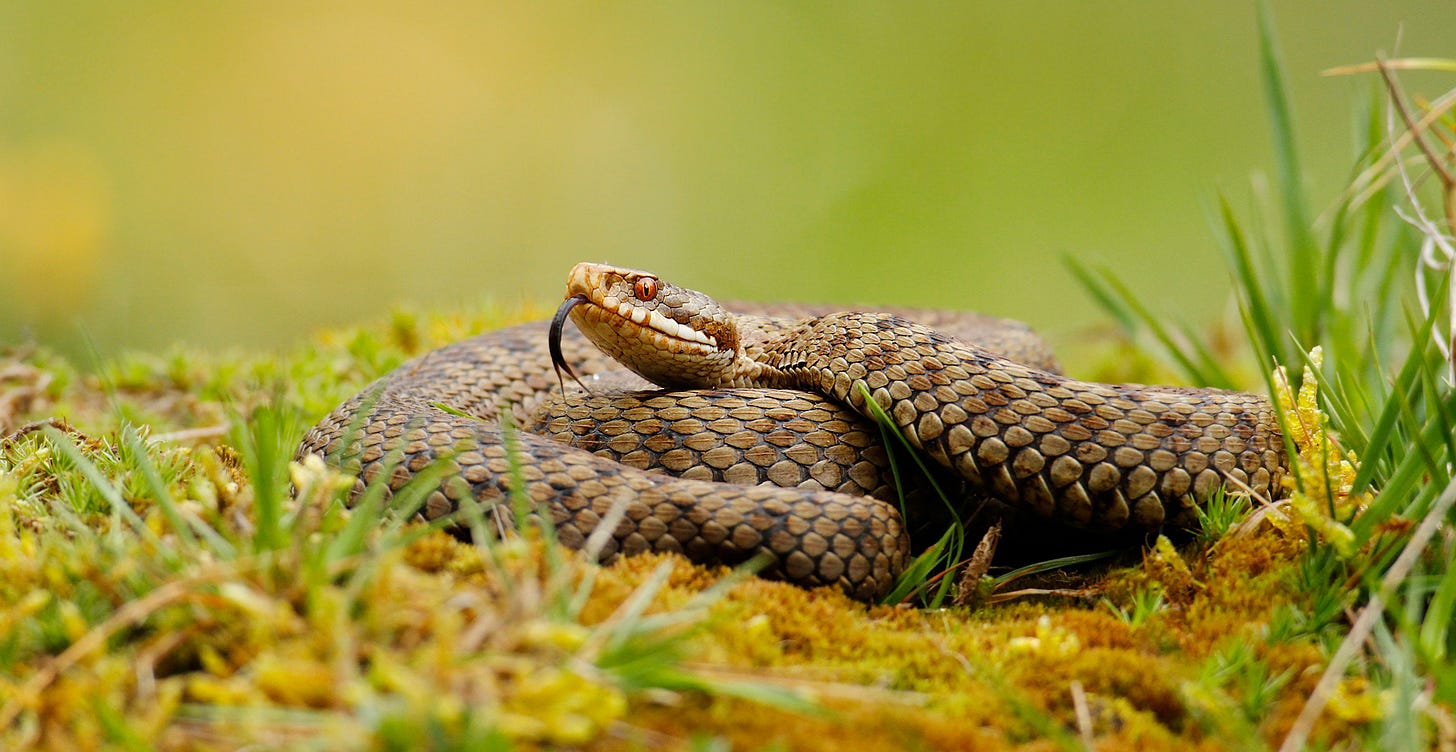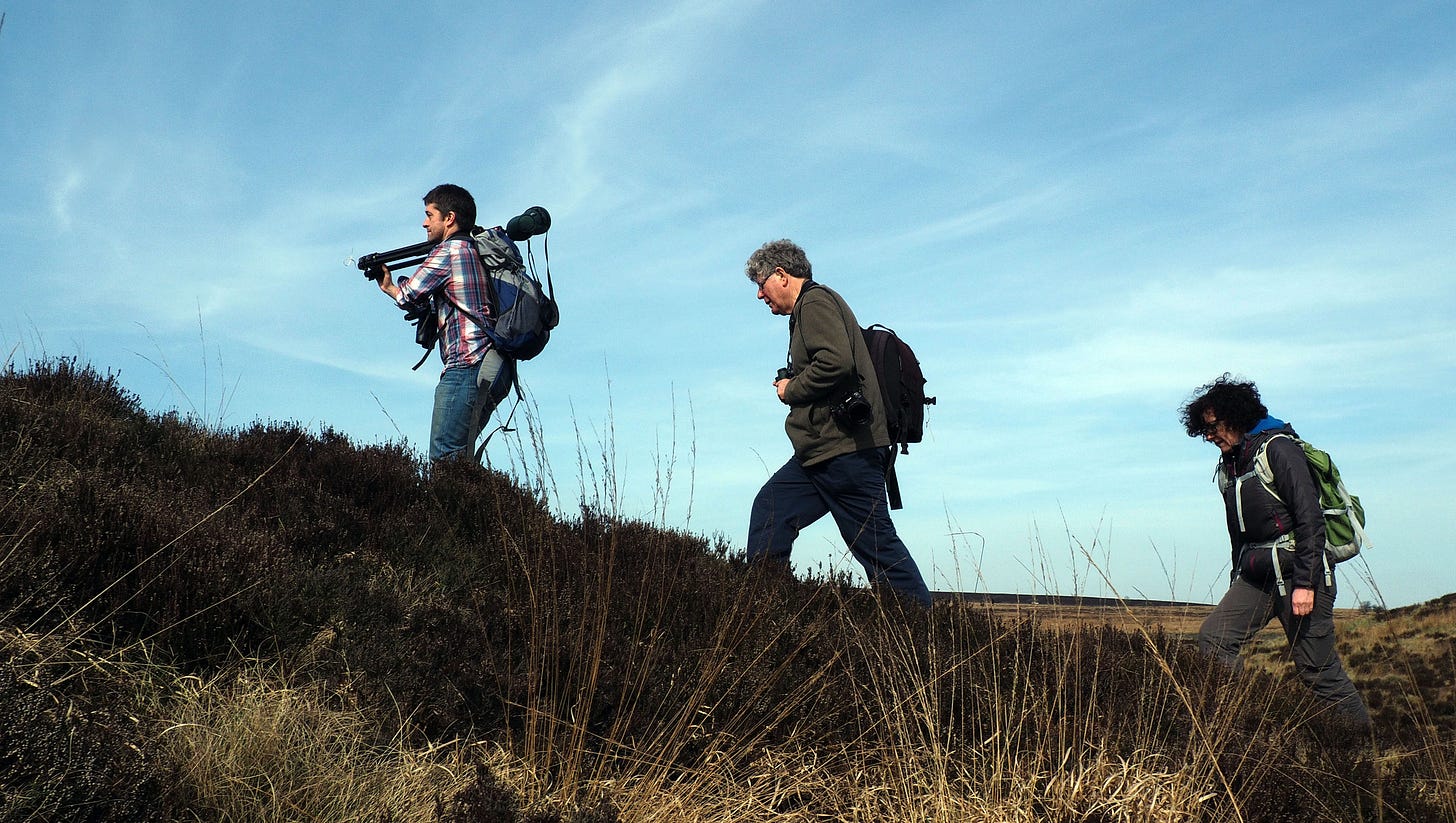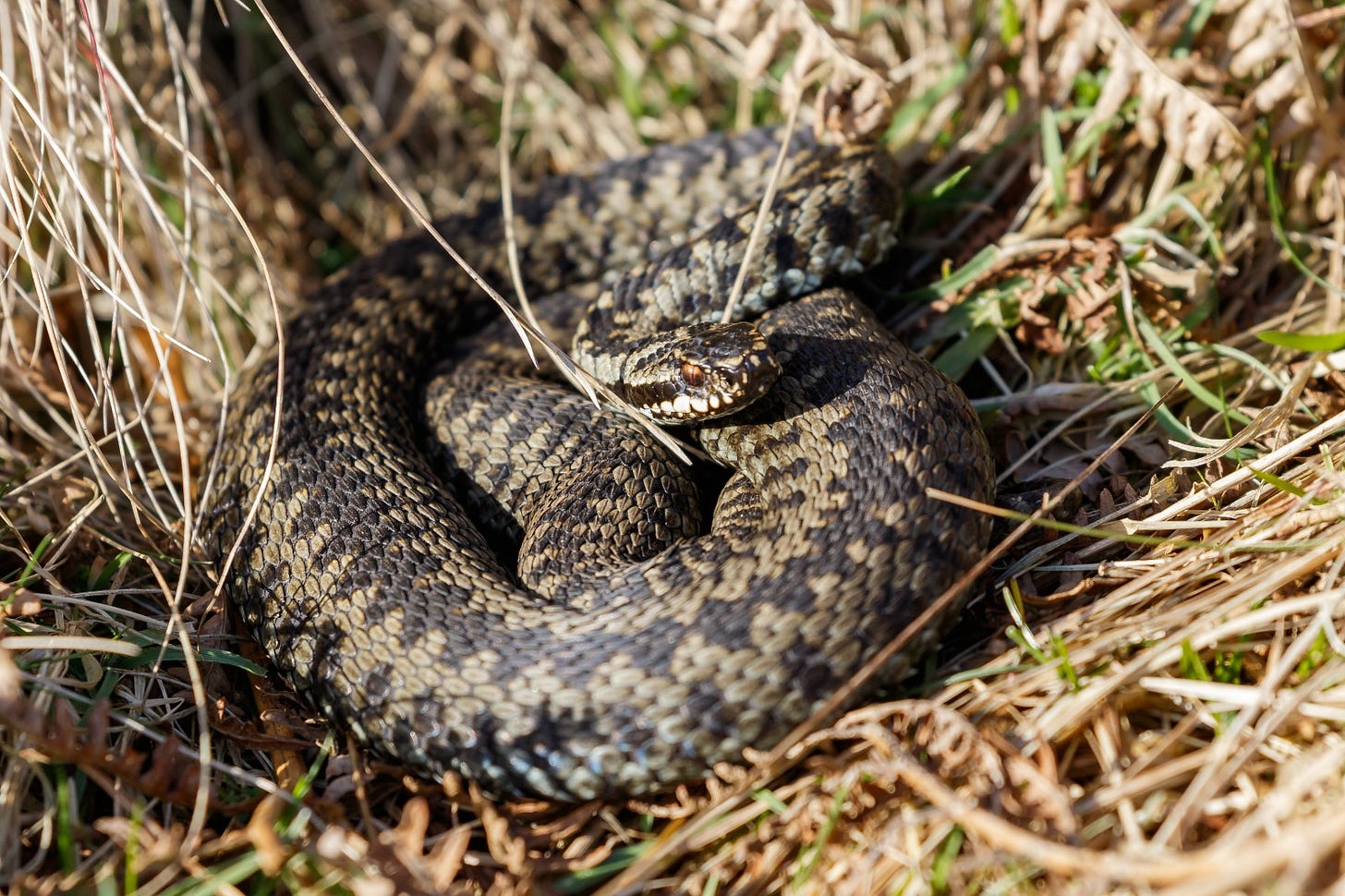Snakes on the Moors: Sunday 19 March
Plus the Peak District's Jasmin Paris at the Barkley Marathon, What's On, and a Swift update.
Just about made it for Sunday. Sorry, delays due to family illness, hope to be back to normal next Sunday. Meanwhile, I’ll have an extra post on Wednesday to include some of the stuff that was going to end up in here until we all got a bug.
(Very) Brief News
Firstly, regular reader and contributer Roger Butterfield commented on the Swift Network story last Sunday:
“Interesting piece about Swifts. Another factor driving the birds away from some of Sheffield's suburbs is the proliferation of overhead cables. Since BT started moving from traditional wires to fibre optics, the number of overhead cables has doubled on some streets. This makes it difficult for Swifts to fly safely into potential nest cavities.
“Perhaps BT needs to be encouraged to: a) remove redundant cables rather than leaving them in place; b) seek advice about positioning new cables in ways that allow Swifts to safely access potential nest holes. It's a problem that needs further investigation.
Thanks Roger - just to say I very much welcome comments that provide further information, either by commenting on the story itself or by email.
Secondly, fell running enthusiasts were checking Twitter every few minutes last week to see how Jasmin Paris was faring for her second attempt at the notorious Barkley Marathons. The race (places available by careful application only) is five loops of a 20 miles (ish) course that changes every year, in Frozen Head State Park in Tennessee, with upwards of 50,000 feet of elevation.
Last year she completed the race ‘fun run’ (3 laps or 60 or so miles) and this year she made it onto 4 laps before being timed out, only the second ever woman to make it that far.
(The whole five laps must be completed in 60 hours, but each individual lap must be completed in 12 hours to be in contention for anything other than the Fun Run. Jasmin Paris returned from the fourth lap, but after her 48 hour time limit).
She’ll be trying again, it seems, but noted on social media that since an unprecedented three people completed the full five laps of the run before cut off time this year, she expects next year’s course to be more difficult than ever.
Running as a member of The Green Runners, she’s asking all runners to think about how they can take part in their sport in a more sustainable way.
Jasmin Paris was born in Hadfield and was a regular Peak District runner in her youth, so we can claim her as one of our own, I reckon.
Finally, a few events for early this week:
Monday 20th - Riverlution Spring Equinox Wellbeing Walk
Monday 20th - Data4Nature at Wardsend Cemetery: Bird Survey
Wednesday 22nd - Volunteer Work Day at Sunnybank, Broomhall
Sheffield’s Snakes
If you’re out on the moors just now, and if you’re very lucky, you might just catch sight of a sunbathing snake.
Conservationists from Moors for the Future reckon there are 400 or more adders on the moorland west of Sheffield, who’ve been waking up over the last month or so from their underground hibernation sites, or hibernacula, where several snakes may have spent the winter keeping warm together.
After a cold winter, male adders need to warm up before trying to find a mate, and being cold blooded reptiles, they often choose a warm sunlit rock for their sunbathing, where they’ll flatten out to maximise the heat in their bodies.
But if a dog, or human, happens by, they’ll quickly slither back underground undoing their day’s efforts to prepare for the breeding season.
“Adders are a protected species so it is important to be aware that they might be in the area when you are out in the Peak District,” said Lisa Came from the National Trust. “Keeping dogs on a short lead and staying on footpaths are two ways people can help protect the adders and reduce the risk of disturbing them.”
Rangers I spoke to also told me how dangerous adders can be to an inquisitive dog. One spoke of a huge vets bill when their own dog was bitten, and another told me he knew two cases where a dog was killed by an adder bite. Something to bear in mind if you’re dog walking around Longshaw or Burbage, for example.
The adder (also know as the viper) has traditionally been feared in the UK as it is venomous, but its danger to humans has been somewhat exaggerated over many years of folklore.
“The idea that they’re dangerous is one reason they were persecuted. No one liked loads of vipers on their doorstep,” said biologist and reptile enthusiast David Carter.
I met David a few years ago along with Tom Aspinall who worked then for Moors for the Future, to learn a bit more about the snakes on our moorland. David Carter was very clear about the risk to humans: “Adders are not dangerous,” he said. “For an average healthy adult, an adder bite is not significantly different to being stung by a wasp or a hornet.”
Adders use their venom to subdue their prey, mainly lizards and small mammals like mice and voles, and because it takes them time to produce the venom in their body, they will only reluctantly use a venomous bite unless hunting.
Bites to humans usually occur when the snake is picked up or handled, and it believes the curious human is about to kill it. Similarly, a dog’s nose and face growling at the adder inches away is also likely to make an adder think its life is in danger.
So it’s best not to approach adders closely, and certainly don’t pick them up. If you are bitten, best practice is to stay still and call for medical advice.
In fact, most adders will be well on their way before you get close enough to see them anyway, as although they can’t hear, they will feel the vibrations of your approach.
“Adders are not scary in the slightest,” said Tom Aspinall. “The last thing they want to do is come into contact with a person.”
Adders are in decline across many parts of the UK, but numbers appear to be steady on most of Sheffield’s moorland.
David Carter has been monitoring Peak District adder populations for several years, and believes good moorland land management, with a diverse range of ground cover plants, is helping adders to raise young and hibernate successfully.
Moorland burning is a danger however, with recent pictures of adders burned to death on local moorland emphasising the unintended consequences of the practice. Another problem is how busy roads can split adder populations from each other, leading to inbreeding, and fewer young adders.
Conservationists say a local issue in the Peak District, especially this time of year, is over-enthusiastic photographers. Adders are beautiful creatures, and the males can often sport bright blue markings in the spring after shedding their skin, and can also ‘dance’ with other males to try and prove their worth to nearby females.
The patterned markings vary between adders, with males usually a silvery grey colour with a dark almost black zig zag down their back, while females are copper coloured with a dark brown pattern.
If you’re keen to photograph an adder, conservationists ask that you don’t hang around for more than a few minutes, because even if you have one unknowing snake in your viewfinder, several more from the same hibernacula may have spotted or felt you coming and wriggled away from the sun to escape your attentions.
If we want to keep adders thriving on our doorstep, the best approach really is not to go looking for them.
“A lot of people have never seen a snake, so it can be a shock to see one for the first time on the moors near Sheffield,” says ranger Mark Bull. “I think they're quite beautiful, they all have different markings, but you have to remember they are a protected species, and declining nationally, so we all need to do everything we can to help keep them living their lives out there on the moors around us.”
Most Sheffielders have little idea there are hundreds of venomous snakes up there on the moors around them (and in some of our woodlands too).
In the past, the fear of snakes would lead many to kill any snake they came across, but nowadays hopefully we’re able to respect rather than fear the city’s snakes.
Thanks for reading. Watch out for the next post on Wednesday, and if you haven’t already, please sign up as a free (or paid) subscriber by adding your email below.




